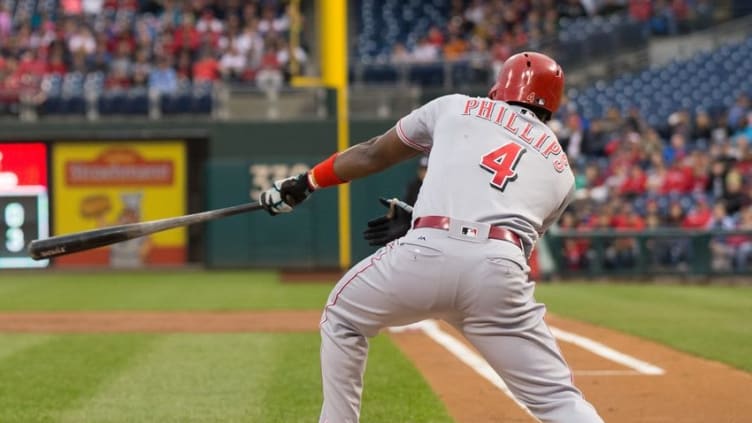Cincinnati Reds’ offense needs a new approach

With an offense that’s among the worst in the league, it’s time for the Cincinnati Reds to finally embrace OBP.
It’s pretty tough to score runs without getting on base. The Reds are making that abundantly clear. The team is in the currently in the midst of a 10-game losing streak during which runs have been sparse, but the offensive problems began well before the drought.
Only six teams have scored fewer than the Reds’ 179 runs this season. Not only does the club have the 29th-ranked offense in terms of batting average (.226), but they’re also second-to-last in on-base percentage (.281). Only the San Diego Padres are worse in both areas. In walk rate, only the Oakland Athletics and Kansas City Royals rank lower than the Reds (6.5 percent). Take away Joey Votto and the Reds are dead last in OBP and BB%.
If the Reds are going to turn things around, a new, more patient approach at the plate is critical. Of their regular position players, just three have an OBP above .300: Votto (.337), Zack Cozart (.320) and Jay Bruce (.317). That can be directly tied back to the team’s low walk rate. Aside from Votto (14.7 BB%), none of the starting eight is above 6.6 percent. For reference, the league average is 8.4 percent.
It seems obvious to say it’s important to get on base at a high clip, but just how important is it? Here’s a list of the current top 10 teams in OBP and their rank in runs:
With the exception of the Marlins and the Brewers, the results are pretty telling. Just to reinforce the importance of OBP, here’s a look at the bottom 10 teams:
Again, the numbers speak for themselves.
There are times when aggressiveness can pay off for a batter, but there are also times when it can be detrimental. In the Reds’ case, it’s been more the latter than the former, as they’ve seen a first-pitch strike 63.5 percent of the time, second-highest in the majors. Not all of those are swinging strikes, of course, but it does give an indication of how often the club jumps at the first offering and gets behind in the count quickly.
More from Joey Votto
- Joey Votto single-handedly saved the Reds’ bacon vs. the Pirates
- Will Joey Votto surpass Johnny Bench for the most HRs in Reds history?
- Reds: Joey Votto has been MLB’s best player since the All-Star break
- Reds: Joey Votto’s quest for a second MVP is very realistic
- Reds: Joey Votto making second-half push for NL MVP
Among the 254 players with 100 plate appearances, Brandon Phillips — outspoken OBP detractor — leads the majors in this category, seeing a first-pitch strike an eye-popping 72.4 percent of the time. Adam Duvall ranks seventh at 70.1 percent, Cozart is 12th at 69.3 percent and Billy Hamilton is 24th at 66.4 percent. Phillips (3rd) and Duvall (7th) are also among the worst offenders in regards to percentage of pitches swung at outside of the strike zone. Naturally, those four players are at the bottom of the team when it comes to drawing free passes, all walking in less than five percent of their plate appearances.
What makes the lack of walks hurt even more for the Reds are a lot of strikeouts. Collectively, the team has the seventh-highest strikeout rate (23.0 percent) in baseball. Duvall (30.6 K%), Votto (26.8) and Eugenio Suarez (26.6) each have struck out in more than one quarter of their plate appearances, which is an alarming pace.
The futility in the batter’s box is easily seen in advanced metrics, as well. In Fangraphs wins above replacement, the Reds are 29th in baseball at minus-0.8 and are above only the Padres and Braves in weighted runs created (73).
The hits aren’t dropping for anyone on the Reds right now, but the lack of patience at the plate from anyone not named Joey Votto isn’t helping matters at all. There are certainly times to be aggressive at the plate. Being overly so can be hurtful, and we’re seeing that right now.